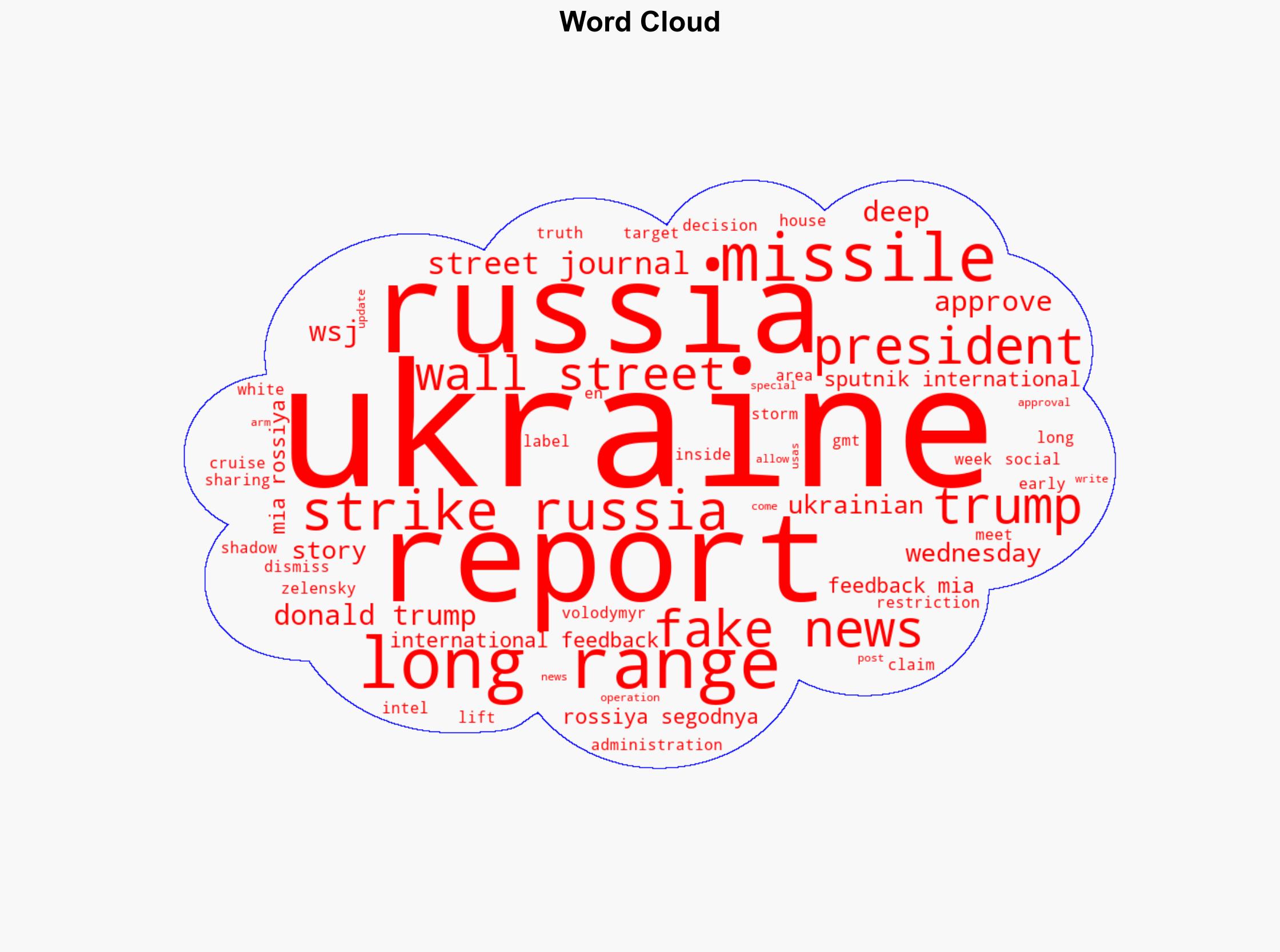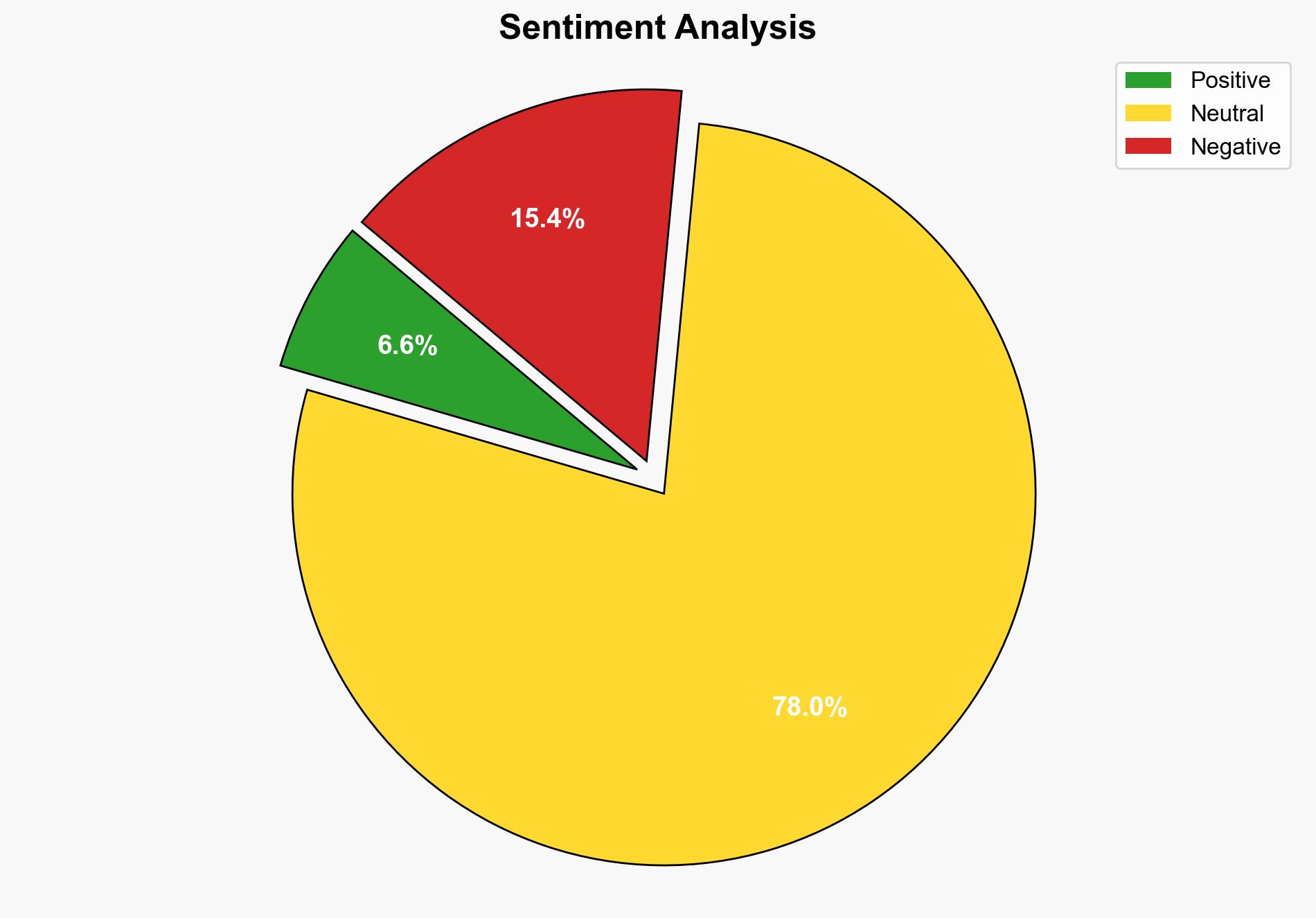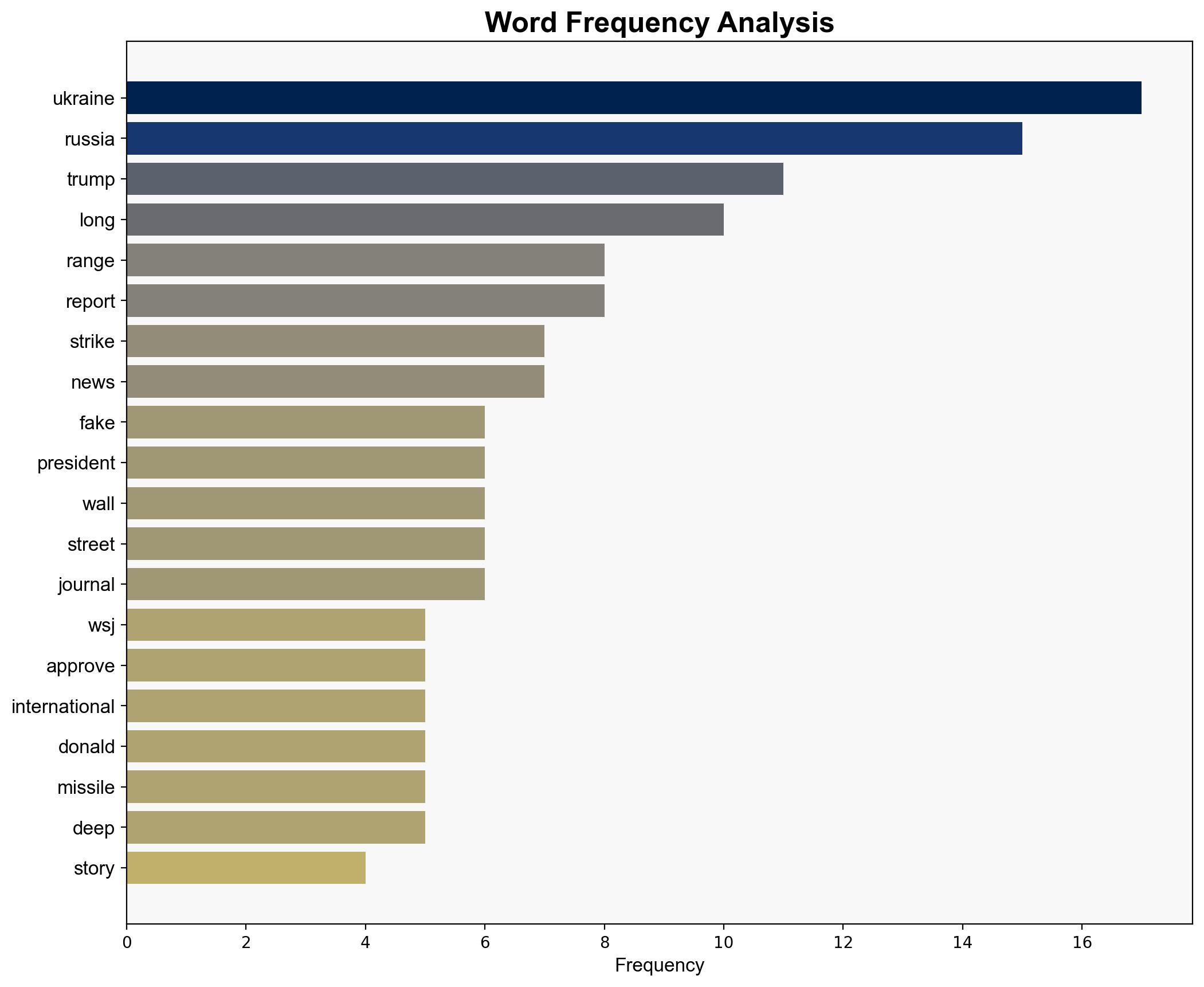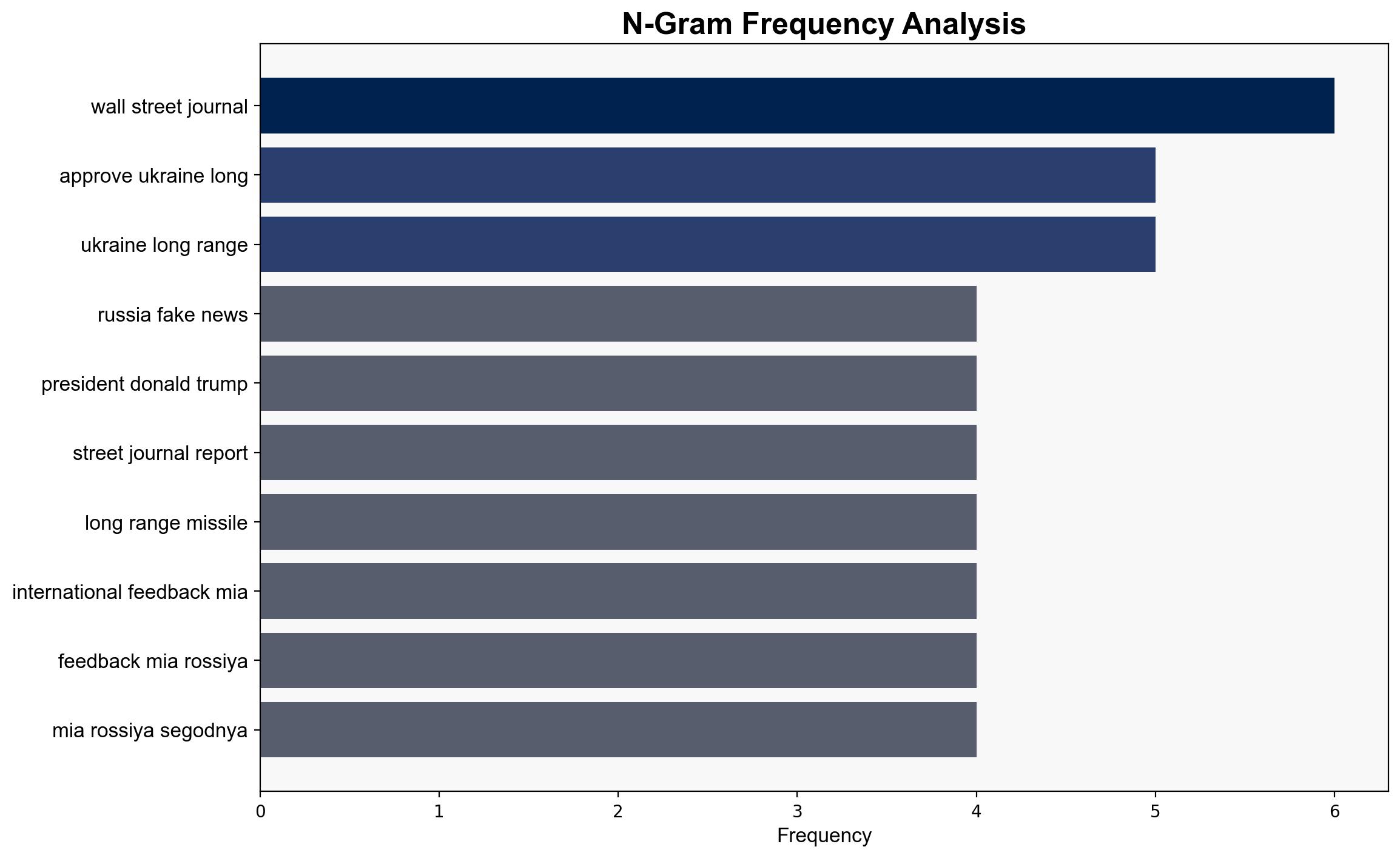Trump Calls WSJ Story on US Approving Ukraines Long-Range Strikes Into Russia Fake News – Sputnikglobe.com
Published on: 2025-10-23
Intelligence Report: Trump Calls WSJ Story on US Approving Ukraine’s Long-Range Strikes Into Russia Fake News – Sputnikglobe.com
1. BLUF (Bottom Line Up Front)
The analysis presents two competing hypotheses regarding the Wall Street Journal’s report on the U.S. approving Ukraine’s long-range strikes into Russia. The hypothesis that the report is inaccurate due to political motivations and misinformation is better supported. Confidence level: Moderate. Recommended action: Monitor further developments and corroborate with independent sources.
2. Competing Hypotheses
1. **Hypothesis A**: The Wall Street Journal report is accurate, and the U.S. has indeed approved Ukraine’s use of long-range missiles against targets deep inside Russia.
– **Supporting Evidence**: The report claims a decision was made following a meeting between Volodymyr Zelensky and Donald Trump, suggesting a high-level agreement.
2. **Hypothesis B**: The Wall Street Journal report is inaccurate or exaggerated, possibly due to misinformation or political motivations.
– **Supporting Evidence**: Donald Trump has publicly dismissed the report as “fake news,” and there is no corroborating evidence from other credible sources.
3. Key Assumptions and Red Flags
– **Assumptions**:
– Hypothesis A assumes the Wall Street Journal has reliable sources and that the reported meeting led to a significant policy shift.
– Hypothesis B assumes that Trump’s dismissal is credible and that the report lacks independent verification.
– **Red Flags**:
– Lack of corroboration from other news outlets or official statements.
– Potential bias in both the Wall Street Journal’s reporting and Trump’s response.
– The timing of the report and Trump’s response may be influenced by political agendas.
4. Implications and Strategic Risks
– **Geopolitical Risks**: If Hypothesis A is true, it could escalate tensions between the U.S. and Russia, potentially leading to retaliatory actions.
– **Misinformation Risks**: If Hypothesis B is accurate, it highlights the risk of misinformation influencing public perception and diplomatic relations.
– **Economic and Cyber Risks**: Escalation could lead to economic sanctions or cyberattacks impacting global markets and infrastructure.
5. Recommendations and Outlook
- **Mitigation**: Increase intelligence sharing with allies to verify the report’s claims and monitor for any changes in military posture.
- **Exploitation**: Use diplomatic channels to clarify U.S. policy and reduce potential escalation with Russia.
- **Scenario Projections**:
– **Best Case**: The report is discredited, and tensions de-escalate.
– **Worst Case**: The report is accurate, leading to military escalation.
– **Most Likely**: Continued ambiguity with no immediate escalation but increased diplomatic tensions.
6. Key Individuals and Entities
– Donald Trump
– Volodymyr Zelensky
– Wall Street Journal
7. Thematic Tags
national security threats, misinformation, geopolitical tensions, media analysis





